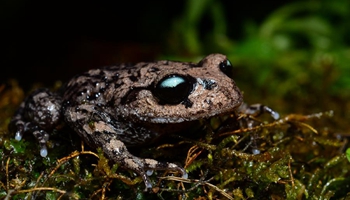WASHINGTON, Aug. 11 (Xinhua) -- Scientists have identified two Zika proteins that might be responsible for microcephaly, making a small step toward preventing Zika-infected mothers from birthing babies with abnormally small heads.
"Our study reported microcephaly-related Zika proteins for the first time, providing target for future research on prevention and treatment," corresponding co-author Zhen Zhao, assistant professor of the University of Southern California, told Xinhua.
"However, we still have a long way to go when it comes to clinical applications," Zhao said.
The Zika virus contains 10 proteins, but only two, known as NS4A and NS4B, may handicap fetal brain formation, according to the study published Thursday in the U.S. journal Cell Stem Cell.
The findings were based on an examination of three strains of Zika in second trimester human fetal neural stem cells.
The researchers found the miscreant Zika proteins smack a cellular signaling gatekeeper called "Akt-mTOR pathway" until it is disoriented and can no longer properly guard brain development and autophagy regulation, the cell's recycling factories.
Autophagy usually digests and kills pathogens, however, when a family of viruses called flaviviruses, including Zika, dengue and hepatitis C, infects a cell, autophagy helps the virus proliferate.
"Zika loves and needs autophagy," senior corresponding author Jae Jung, professor of the University of Southern California, said in a statement.
"Zika raises the activity in this recycling factory so they can use the energy and nutrients there to replicate. It's possible that since Zika is using most of the energy, the neuronal stem cells are left with metabolic deficits. Thus the chances for them to differentiate and mature into neurons and other brain cell types is much lower."
When these two key proteins hijacked fetal neural stem cells, the size of brain "organoids" -- artificially grown balls of brain tissue in lab -- were on average halved, according to the study.
The researchers are also working on experiments to better demonstrate the functions of NS4A and NS4B in mouse models.
"It is important to remember that not every pregnant woman infected with Zika virus gives birth to a baby with microcephaly," Zhao said. "Nevertheless, we are trying to develop a cure for that percentage that does get Zika-related microcephaly."










